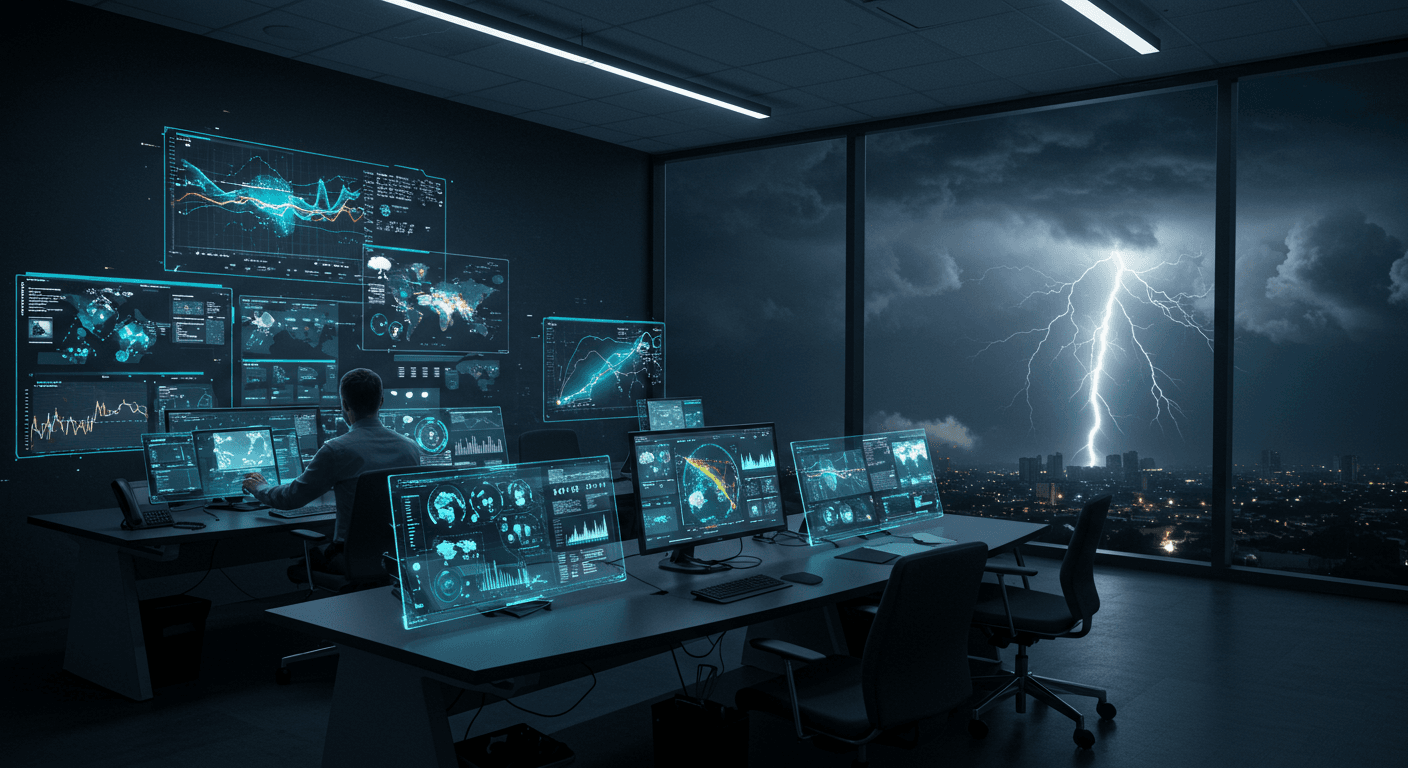
Weather events and natural disasters are growing in frequency and intensity, posing significant risks to businesses worldwide. From hurricanes and wildfires to floods and earthquakes, these events can disrupt operations, endanger employees, and cause billions in damages. Traditional methods of disaster preparedness and response often struggle to keep pace with the unpredictable nature of these threats.
Enter artificial intelligence (AI), a transformative technology that is redefining how organizations prepare for, respond to, and recover from natural disasters. By leveraging AI, companies can enhance their resilience, protect their people and assets, and ensure business continuity even in the face of extreme conditions.
The Challenges of Managing Natural Disasters
Weather events and natural disasters are complex, dynamic phenomena that require rapid, coordinated responses. Companies face several challenges in managing these risks:
- Predictability: Traditional forecasting methods often lack the precision needed for effective decision-making.
- Situational Awareness: During a disaster, organizations must process vast amounts of information from multiple sources in real time.
- Response Coordination: Activating emergency protocols, communicating with employees, and safeguarding critical assets can be overwhelming without proper systems in place.
These challenges highlight the need for smarter, faster, and more adaptable solutions—and that’s where AI excels.
The Role of AI in Securing Companies
AI is transforming disaster preparedness and response by providing businesses with actionable insights, predictive capabilities, and real-time automation.
1. Predicting and Preparing for Risks
AI-powered systems can analyze vast datasets, including historical weather patterns, environmental conditions, and geospatial data, to predict the likelihood and impact of natural disasters. For example:
- Hurricane Tracking: AI models can forecast the path and intensity of hurricanes, giving companies days to secure facilities, reroute supply chains, and protect employees.
- Flood Risk Assessment: By analyzing topographical data and rainfall patterns, AI can identify areas at risk of flooding and recommend preventative measures.
- Wildfire Monitoring: AI systems use satellite imagery and climate data to detect and predict the spread of wildfires, allowing for proactive evacuation planning.
2. Enhancing Situational Awareness During Disasters
AI excels at processing data from multiple sources to provide a comprehensive view of unfolding events. Examples include:
- Real-time integration of weather forecasts, environmental sensor readings, and social media activity to identify impacted areas.
- AI-powered video analytics to monitor facility conditions, such as structural damage or blocked evacuation routes.
- Automated updates and alerts to keep employees and stakeholders informed about changing conditions.
3. Automating Emergency Responses
AI-driven automation enables companies to respond quickly and effectively during disasters:
- Activating evacuation protocols and locking down critical areas based on real-time risk assessments.
- Sending personalized alerts to employees, ensuring that safety instructions are relevant to their location.
- Coordinating with first responders by providing live data on the affected area’s conditions.
Real-World Applications of AI in Disaster Resilience
- Hurricane Preparedness in Supply Chains:
A global logistics company uses AI to forecast the impact of hurricanes on shipping routes and warehouses. By rerouting shipments and pre-positioning inventory in unaffected areas, the company minimizes supply chain disruptions and ensures timely deliveries. - Flood Mitigation for Urban Infrastructure:
A smart city deploys AI-powered flood monitoring systems to predict high-risk areas during heavy rainfall. When flood levels reach a critical threshold, automated systems trigger traffic diversions and alert emergency services, reducing damage and saving lives. - Wildfire Risk Management in Utilities:
A utility company leverages AI to monitor wildfire risks near power lines. By analyzing wind speeds, vegetation density, and historical fire data, the system predicts high-risk areas and schedules preventative maintenance to mitigate fire hazards.
The Benefits of AI in Disaster Resilience
AI’s ability to predict, monitor, and respond to natural disasters offers significant advantages:
- Reduced Response Times: Automated alerts and protocols ensure faster decision-making and action.
- Minimized Damage: Predictive insights allow companies to take preventative measures, protecting assets and infrastructure.
- Enhanced Employee Safety: Real-time updates and personalized alerts help keep employees informed and out of harm’s way.
- Faster Recovery: AI-powered tools streamline post-disaster assessments and accelerate the return to normal operations.
AI as a Strategic Enabler
Beyond immediate disaster response, AI plays a critical role in long-term risk management and planning:
- Resilient Infrastructure: AI insights help organizations design infrastructure that can withstand extreme conditions.
- Optimized Emergency Plans: Continuous learning from past events enables AI to refine disaster preparedness strategies.
- Cost Savings: By reducing damage and downtime, AI helps companies save money while maintaining operational continuity.
In an era of unpredictable weather and escalating natural disasters, businesses cannot afford to rely on outdated approaches to risk management. AI offers a powerful solution, enabling companies to proactively prepare for disasters, respond more effectively, and recover more quickly.
Key Takeaways:
- Invest in AI-powered tools to enhance predictive capabilities, situational awareness, and automated response systems.
- Align AI-driven disaster resilience strategies with broader business goals, such as protecting assets, ensuring employee safety, and maintaining operational continuity.
- Embrace AI as a long-term enabler of security, resilience, and cost savings.
The future of disaster resilience is here. By leveraging AI, companies can navigate the challenges of an increasingly unpredictable world while safeguarding their people, operations, and assets. Are you ready to take the next step in securing your organization?